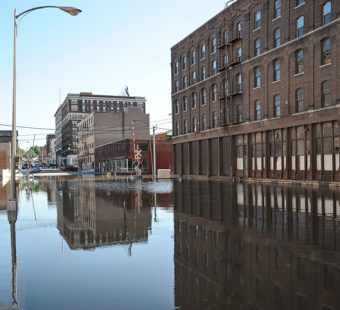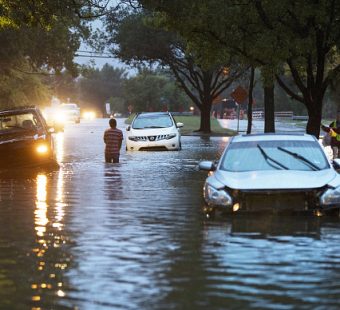
Data Technology, Collaboration Will Be Key to Closing Flood Protection Gap, Report Says
Jeff Dunsavage, Senior Research Analyst, Triple-I (09/22/2022)
Floods cost the global economy more than $82 billion in 2021, and only about $20 billion of that amount was insured. This flood protection gap needs to be closed, and, as a new study by Triple-I and CapGemini reports, traditional insurance alone won’t be enough to do it.
“Risk transfer is just one tool in the resilience toolkit,” Triple-I CEO Sean Kevelighan says in the report, which was announced this week during the InsureTech Connect conference in Las Vegas. “The insurance industry’s understanding of loss trends and expertise in assessing and quantifying risk must be joined at the hip to technology, public policy, finance, and science.”
Seth Rachlin, global insurance industry leader at Capgemini, adds, “Risk prevention based on data and behavioral science is at the top of the agenda for future-focused insurers.”
The main drivers of rising flood losses are related to economic growth and urbanization. Coastal development puts more property at risk and eliminates ways for water to flow or to be absorbed. Other factors – such as aging or absent flood-control infrastructure – also affect losses. Extreme weather and rising sea levels exacerbate the threat.
While awareness of weather and climate risk has grown in recent decades and much action is being taken, a lot of work remains to establish a mindset focused on resilience and pre-emptive mitigation. Behavioral change is needed at the government, business, community, and individual levels, and actionable data is key to driving such change.
Insurers acknowledge the role of data in addressing climate risk; but, as a recent Capgemini analysis notes, relatively few are “on course to achieve climate resiliency.” Of insurers surveyed, 40 percent said they consider climate risk a “top priority,” but only 35 percent said they have adopted tools that are “critical to unlocking new data potential and enabling more accurate risk assessments.”
Pre-emptive mitigation and resilience in a wetter world will require creative measures and constructive partnerships, the Triple-I/CapGemini paper says. It cites examples like Flood Re – a collaboration between the U.K. government and insurance industry – which has launched an initiative to make homes more flood resilient. In a similar vein, community-based catastrophe insurance (CBCI) – arranged by local government or quasigovernmental bodies to cover individual properties – is being used in the United States. In addition to improving financial recovery for communities, CBCI can provide more affordable coverage for families and businesses.
New insurance products can help close the protection gap, but insurers also need to provide incentives to drive purchases and behavior change. This includes discounts for improvements that reduce the likelihood and size of claims. Tulsa, Okla., residents, for example, are benefiting from the city’s NFIP Class 1 rating through the lowest flood insurance rates in the United States. Tulsa spent decades developing and implementing stormwater-management improvements.
Improved data and analytical tools can make flood not just an insurable risk but a significant business opportunity. People won’t act or spend funds to address issues they don’t understand or believe are too far in the future to matter now. Decision makers must understand not only the risks but the cost of failure to act.
Learn More
Kentucky Flood Woes Highlight Inland Protection Gap (8/25/2022)
A Push for Better Building Codes as Catastrophe Losses Mount (6/6/2022)
A New Approach to Anticipating Flood Damage (3/17/2022)
Triple-I “State of the Risk” Issues Brief: Flood (1/22/2022)



